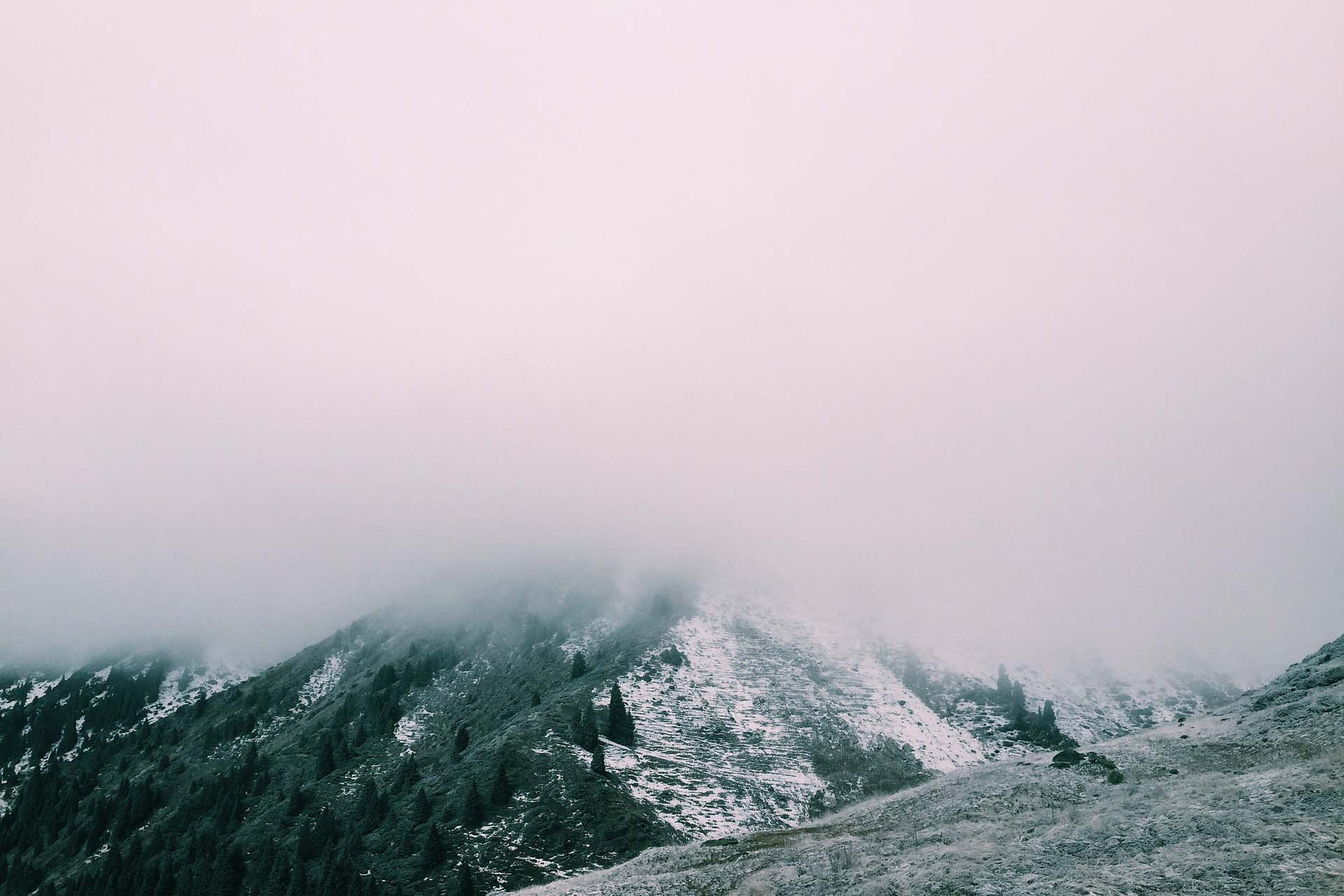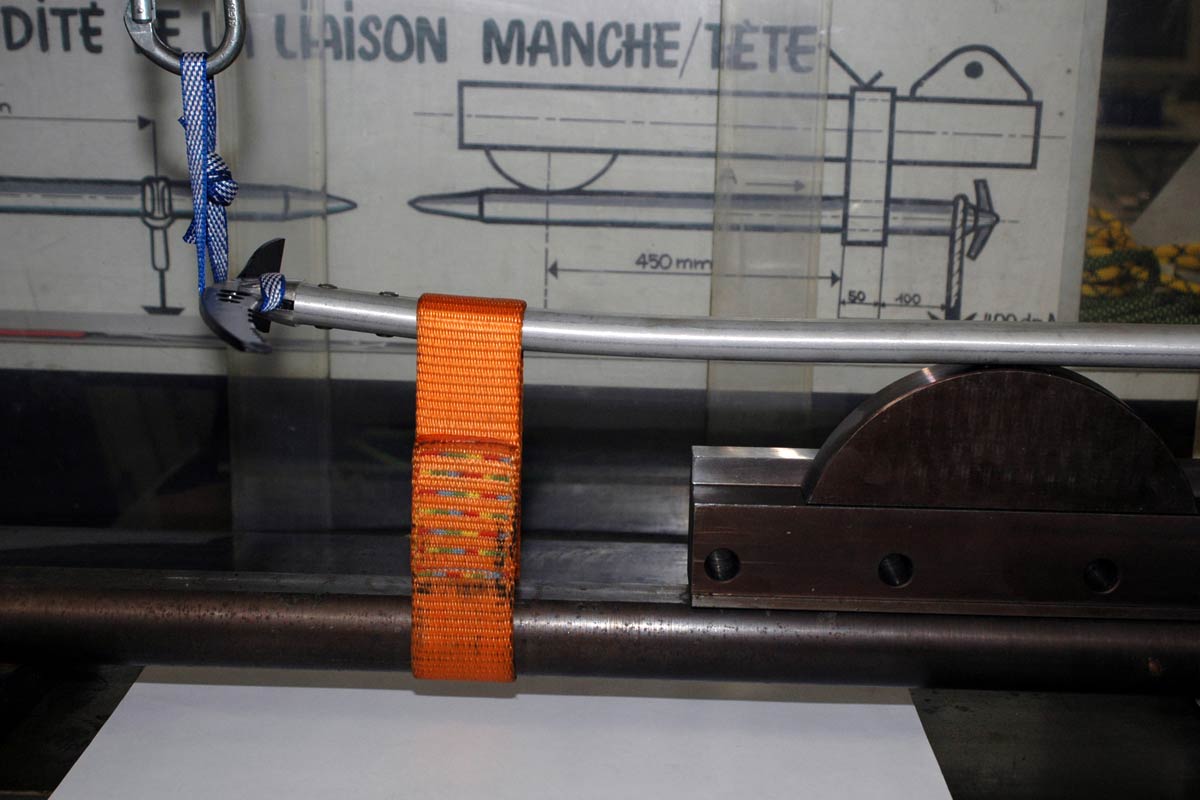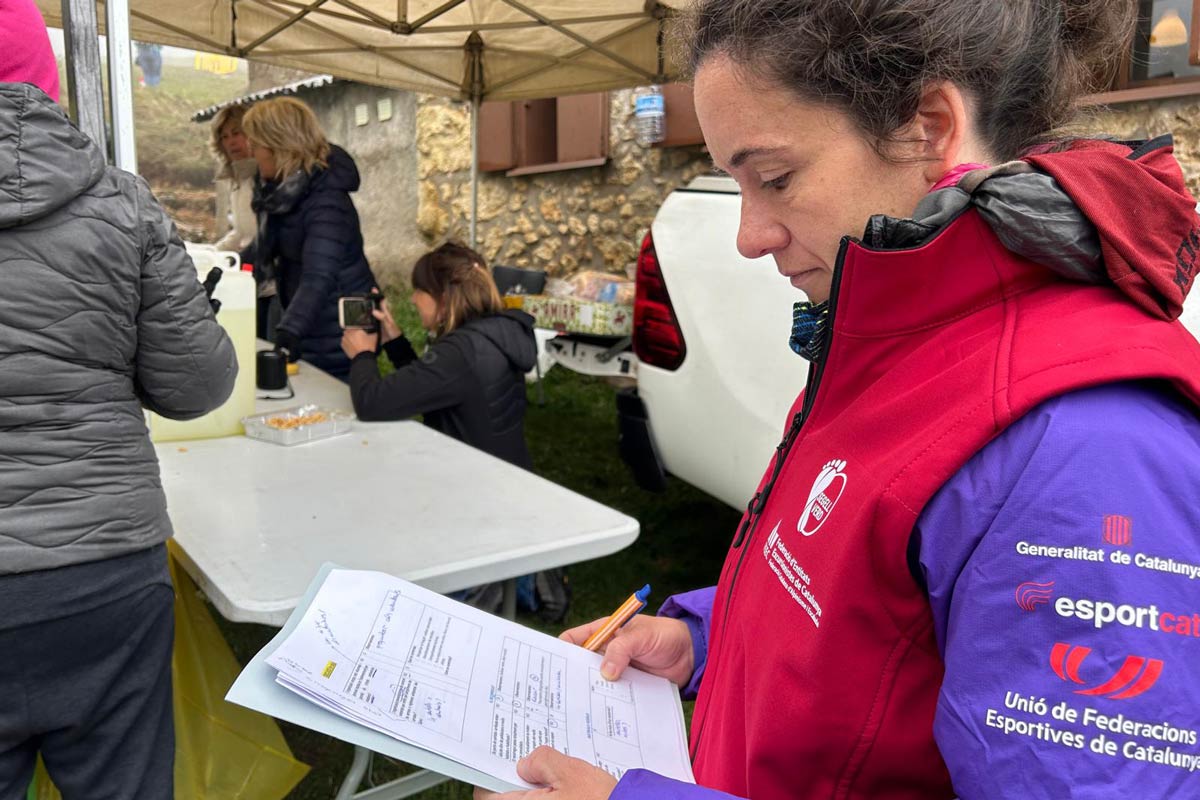Orienting yourself in the mountains in good weather poses few problems for the attentive navigator. It is, however, quite different with reduced visibility.
- In a thick fog, even the most seasoned mountaineer has no point of reference.
- Although you can navigate in bad weather with a solid command of map and compass or your GPS unit, this is a trying scenario that is best avoided.
- In mountain terrain with bad weather, poor visibility should lead to your abandoning your itinerary, unless you must absolutely continue, to escape an even riskier situation.
- Navigating in bad weather requires continuous focus and calm.
Anticipating the difficulties will improve your ability to navigate in poor visibility:
- To the extent possible, before fog enshrouds you, note your exact position on the map using the techniques discussed in the “How to orient yourself when visibility is good” section.
- If you foresee the arrival of bad weather in time, set out for a reliable landmark (col, distinctive ridge, etc.) off which you’ll base map-and-compass navigation once conditions deteriorate.
- The challenges and intricacies of this technique are explained in detail in the following sections.
This is the second article in our Alpine Summer Skills series. The entire UIAA Alpine Skills Summer handbook is now available to purchase as a digital download. The download also offers access to free upgrades to the guide. To purchase the guide please click here.
Article 1: Identifying the dangers associated with objective hazards.
About the UIAA Alpine Skills Summer Guide
The UIAA Alpine Skills Summer guide was first published in 2015. Produced in collaboration with the Petzl Foundation, the guide and has been well received worldwide and is currently available in five languages. To mark the launch of a digital version of the publication, the UIAA is running a series of articles from the guide designed to help hikers, climbers and mountaineers develop their skills and knowledge of the mountain environment.
The guide was developed specifically as a reference document for trip leaders and instructors of club and federations within the UIAA – an aide memoire for climbers and mountaineers who attend training courses delivered by instructors and guides who have gained qualifications accredited by the UIAA. Now open to the wider climbing and mountaineering world, the handbook’s four modules focus primarily on summer activities. However, a specific winter guide is currently in production.
The digital edition of Alpine Skills: Summer, a downloadable application which permits free updates to content, can be purchased here.
The English-language version of the Alpine Skills: Summer guide was translated by the Alpine Club of Canada (ACC).
TRAINING & SKILLS PARTNER




